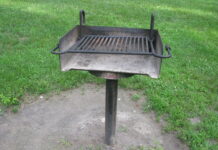Photo credit: DiasporaEngager (www.DiasporaEngager.com).
Where there are anti-Jewish atrocities, there are deniers. And on Oct 7, there were atrocities, including countless acts of murder and mutilation, as well as brutal acts of sexual violence by the Palestinian attackers.
In this three part series, CAMERA will expose some of these deniers, and offer irrefutable proof of the sexual abuse of Israeli women by the Palestinian attackers both during and after the October 7 atrocities.
Part One of this story laid out the facts about Hamas’ sexual violence, proof it happened, and some information about the critics who are disputing these facts. Part Two follows below.
Denial
As with the broader Hamas apologia, the forms of denial of sexual violence range from heavy-handed to more refined. Mondoweiss, for example, contends that the most well-known testimonies are “nothing more than a repetition of fake news and government propaganda.” Another writer who is a college professor describes a compendium of sexual assault charges as “a manipulative betrayal of actual victims” (emphasis added). Arun Gupta in Yes! magazine insists that “alternative explanations applies [sic] to nearly every sexual violence claim in the media.”
Others cast doubt with a bit more subtlety, arguing there is no evidence of “mass” or “systematic” rape while ignoring or dismissing all evidence of rape. Perhaps the most “generous” — and rarest — subcategory accepts that rape “may have occurred” but brushes it off as par for the course: “The question has never been whether individual acts of sexual assault may have occurred on October 7. Rape is not uncommon in war,” shrugs The Intercept. (Their point of contention, they continue, is whether there was a “pattern of gender-based violence on Oct. 7.”)
Which brings us to some of the specific arguments by the deniers.
Argument: Rape Crisis Centers Didn’t Confirm Rapes. (They did.)
The Intercept, in its attempt to both discredit a New York Times article on sexual violence and suggest an absence of evidence of sexual violence, cite silence from Israeli rape crisis centers. Co-authors Jeremy Scahill, Ryan Grim, and Daniel Boguslaw point to an interview with one of the New York Times reporters, Anat Schwartz, that was recorded after the publication of her piece. They write:
In the podcast interview, Schwartz details her extensive efforts to get confirmation from Israeli hospitals, rape crisis centers, trauma recovery facilities, and sex assault hotlines in Israel, as well as her inability to get a single confirmation from any of them. [emphasis added]
The Intercept authors never revisit this, leaving readers to believe the relevant professionals are unaware of any sexual assaults.
But just a week before the Intercept piece was published, the Association of Rape Crisis Centers in Israel released a report concluding that “Hamas’s attack on October 7 included brutal sexual assaults.” The report assessed open-source information as well as “information that arrived at the ARCCI from professionals and confidential calls.” It was very much a “confirmation” from rape crisis centers.
The Intercept piece, which speaks only of silence by those centers, does not mention the existence of the report.
If there’s doubt that the omission might be calculated, we should consider how the authors also cover up Schwartz’s reference to learning of a sexual assault survivor at the start of her investigation. They write:
After seeing [media] interviews [with a unit 669 paramedic who shared unfounded accounts], Schwartz started calling people at Kibbutz Be’eri and other kibbutzim that were targeted on October 7 in an effort to track down the story. “Nothing. There was nothing,” she said. “No one saw or heard anything.” She then reached the unit 669 paramedic who relayed to Schwartz the same story he had told other media outlets…
If readers were to cross-check with the podcast itself, though, they would notice a glaring elision from this summary. (Or more likely, they wouldn’t notice — the interview is in Hebrew, leaving most Intercept readers unable to check for themselves.) Just after Schwartz’s reference to calling people at kibbutzim and just before her description of reaching out to the paramedic, she tells the interviewer:
Then there started to be some drips [of information], and suddenly a psychologist who worked, volunteered, with survivors of the Nova [music festival]– so she says, “Actually a woman wrote on our site that she endured sexual assault. But I’m not qualified at all to care for victims of sexual assault, so I passed her to a colleague.” [emphasis added]
It would have been impossible for The Intercept, which says it fully translated the interview, to miss Schwartz’s comment. The relevant section lasts just over a minute. Schwartz speaks of the kibbutzim for six seconds; then about the assault victim for thirty seconds; and finally then about the paramedic for roughly 20 seconds.
Claim: There is no “testimony.” (There is.)
A November headline on Haaretz reads, “The Scope of Hamas’ Campaign of Rape Against Israeli Women Is Revealed, Testimony After Testimony.”
According to Ali Abunimah and Electronic Intifada, the article itself disproves the headline, as it notes that a newly formed Israeli commission has “thus far … not taken testimony directly.” This, Abunimah insists, is a “giveaway” of foul play.
Anyone bothering to read the piece would learn that the headline is unremarkable and appropriate. The story speaks of “testimony collected by the police,” testimony “from volunteers at the forensic medicine institute,” and “testimony from Hamas terrorists.”
Argument: Shari Mendes Didn’t Mention Rape Before November. (She did.)
Shari Mendes, who worked at a makeshift morgue used to process and identify bodies from Hamas’ massacre, described evidence of sexual assault: corpses of many young women bloodied “particularly round their underwear,” others shot in the breasts, some with broken pelvises.
So Mondoweiss works to discredit her. First, the publication charges that, in her Nov. 18 interview with CNN, she appeared under a pseudonym. (She appeared under the name Shari.)
The larger attempt to discredit her focuses on a supposed inconsistency in Shari’s CNN interview: “In [a] written report in Ynet, published on October 31, 2023, she did not mention any claims of sexual violence.”
In other words, Mondoweiss casts her CNN testimony about rape as a new embellishment, because 18 days earlier she said nothing of the sort.
The “written report” cited by Mondoweiss is a news story that cites five workers at the morgue. Here, from that Hebrew article, is the entirely of the section that quotes Mendes:
“In my civilian life, I’m actually an architect,” [Shari] says, “but on October 7, the world changed, and from my routine life we went over to rooms for identification and purification of the bodies, some of which were in terrible condition, and yet, I cleaned them all with love, dedication and respect.”
As time passed, she tries to come to her senses, and it is not easy for her. “We are still shocked by the amount of evil we saw in the bodies and the condition of some of them. We still have nightmares from the smell. It will take some time before we manage to forget it.”
She says that until this interview she did not allow herself to cry. “I’m afraid that if I cry, I’ll fall apart. I’m a woman who runs away from crying and holds a passion. I also don’t let myself feel. What I want most is for every mother to know with what love and tenderness we purified her daughter,” she says.
Then she bursts into tears.
This is meant to be proof that Mendes’ dishonestly lied to CNN.
At any rate, contrary to Mondoweiss’ insinuation, Mendes did discuss evidence sexual violence before her CNN appearance, and even before the publication of the cited Ynet article.
On Oct. 20, she was quoted in the Daily Mail referring to “evidence of mass rape so brutal that they broke their victims’ pelvis — women, grandmothers, children.” In a video posted on Oct. 24, she notes that those at the morgue saw “genitals cut off” and stated that “woman have been raped.” Ynet itself had previously quoted a video clip in which Mendes says that morgue workers have “seen women who had been raped.” She is similarly quoted in an Oct. 30 piece on a Fox News.
Mondoweiss’ argument, then, relies not only on weak argumentation, but also egregious cherry picking.
And Rami Shmuel …
Mondoweiss pulls a similar stunt with another of CNN’s interviewees, a recovery volunteer named Rami Shmuel. Shmuel told CNN that “There is not a doubt about what our girls went through with terrorists. We found naked women stripped out without any clothes, their legs were spread out.”
Mondoweiss counters:
CNN fails to mention the fact that Rami Shmuel was not present at the festival location during the attack. According to Shmuel’s Facebook post, published on the afternoon of October 7, he was “safe” in a villa in Netivot settlement.
Shmuel claims the next day that he joined efforts to search for bodies and survivors in the area in a personal, unofficial capacity. What Shmuel told his followers on the evening of October 8 did not have any hint of sexual violence: “An hour ago, I left the area, and the scenes are very, very difficult and (…) A war zone in every sense of the word. Hundreds of abandoned bullet-riddled cars, fires still burning in some open areas.” (ellipsis in original)
No hint, they say.
The fact that Shmuel was not at the festival is irrelevant — a red herring with no value beyond throwing off readers. His discussion on CNN is about recovery efforts after the massacre.
More strikingly, although Mondoweiss holds up the Oct. 8 Facebook post as if it is the extent of Shmuel’s testimony, it only represents a sliver of the picture. Shmuel was in the field for 10 days, during which his posts went well beyond references to abandoned cars.
On Oct. 9, he wrote that with every hour that passes and every bit of territory wrested from Hamas, “the magnitude of the disaster, the cruelty of the human animals, and the severe horrors are revealed.” Like in his Oct. 8 post, he shares no specifics about the human impact. Are we meant to conclude from this that he saw no victims?
On Oct. 10, he described a “difficult night” during which the “reality of the great horrors and the disaster” hit him and, for a brief moment, he “cried like a child broken to pieces.” And later that day: “The sights and stories I was exposed to in the last days are something I will never forget until the day I die.”
On Oct. 11, he wrote of “another day of being exposed to horrors” that aren’t shared in the media. It is the front line of hell, he says.
On Oct. 17, he wrote: “Come see how cruelly everyone was murdered here. There is almost no corpse that hasn’t been abused.”
For Mondoweiss to point to Shmuel’s Oct. 8 post as evidence he did not see atrocities — bodies, burned bodies, naked and splayed bodies, or anything else — is plainly dishonest.
Part Three of this series will appear tomorrow.
Gilead Ini is a Senior Research Analyst at CAMERA, the foremost media watchdog organization focused on coverage of the Arab-Israeli conflict, where a version of this article first appeared.
Source of original article: Gilead Ini / Opinion – Algemeiner.com (www.algemeiner.com).
The content of this article does not necessarily reflect the views or opinion of Global Diaspora News (www.GlobalDiasporaNews.com).
To submit your press release: (https://www.GlobalDiasporaNews.com/pr).
To advertise on Global Diaspora News: (www.GlobalDiasporaNews.com/ads).
Sign up to Global Diaspora News newsletter (https://www.GlobalDiasporaNews.com/newsletter/) to start receiving updates and opportunities directly in your email inbox for free.
































